Hydrodynamic and Performance Evaluation of a Porous Ceramic Membrane Module Used on the Water-Oil Separation Process: An Investigation by CFD
- PMID: 33567608
- PMCID: PMC7915114
- DOI: 10.3390/membranes11020121
Hydrodynamic and Performance Evaluation of a Porous Ceramic Membrane Module Used on the Water-Oil Separation Process: An Investigation by CFD
Abstract
Wastewater from the oil industry can be considered a dangerous contaminant for the environment and needs to be treated before disposal or re-use. Currently, membrane separation is one of the most used technologies for the treatment of produced water. Therefore, the present work aims to study the process of separating oily water in a module equipped with a ceramic membrane, based on the Eulerian-Eulerian approach and the Shear-Stress Transport (SST k-ω) turbulence model, using the Ansys Fluent® 15.0. The hydrodynamic behavior of the water/oil mixture in the filtration module was evaluated under different conditions of the mass flow rate of the fluid mixture and oil concentration at the entrance, the diameter of the oil particles, and membrane permeability and porosity. It was found that an increase in the feed mass flow rate from 0.5 to 1.5 kg/s significantly influenced transmembrane pressure, that varied from 33.00 to 221.32 kPa. Besides, it was observed that the particle diameter and porosity of the membranes did not influence the performance of the filtration module; it was also verified that increasing the permeability of the membranes, from 3 × 10-15 to 3 × 10-13 m2, caused transmembrane pressure reduction of 22.77%. The greater the average oil concentration at the permeate (from 0.021 to 0.037 kg/m3) and concentrate (from 1.00 to 1.154 kg/m3) outlets, the higher the average flow rate of oil at the permeate outlets. These results showed that the filter separator has good potential for water/oil separation.
Keywords: Ansys Fluent; CFD; membranes; produced water; separation.
Conflict of interest statement
The authors declare no conflict of interest.
Figures
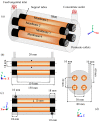
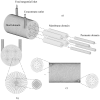








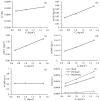
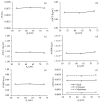
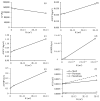
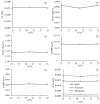
References
-
- Igunnu E.T., Chen G.Z. Produced water treatment technologies. Int. J. Low Carbon Technol. 2012;9:157–177. doi: 10.1093/ijlct/cts049. - DOI
-
- CONAMA N° 430/Art.4, RE. CONAMA Resolution No. 430 of May 13, 2011. Provides for the Conditions and Standards for the Discharge of Effluents, Complements and Amends Resolution No. 357, of March 17, 2005, of the National Council for the Environment-CONAMA. Ministry of the Environment; Brasilia, Brazil: 2011. (In Portuguese)
LinkOut - more resources
Full Text Sources
Other Literature Sources
Miscellaneous

